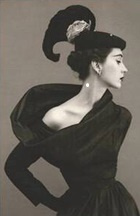Giselle: What Becomes of the Broken Hearted
Auckland Art Gallery Auditorium, Auckland
27/04/2019 - 27/04/2019
Production Details
Mary-Jane O’Reilly’s condensed contemporary ballet; Giselle – What becomes of the broken hearted is a high-intensity, 20-minute excerpt of a full-length work that draws its stylistic landscape from post-WW2 film noir, as captured in the immortal words of the genre’s iconoclast Raymond Chandler; ‘sexual love is a one-way ticket to hell’.
We find Giselle battling to keep her dreams of love alive against the forces of darkness and cynicism with the elegant, but toxic, Ice Queen and her sisterhood of jilted femme fatales reborn into a time-warp subterranean club, brooding on their crushed dreams of romance and love.
Featuring a cast of 10 contemporary and ballet-trained dancers in beautifully tailored vintage jackets, angular lingerie, hats, gloves and veils with Mary-Jane’s clever and provocative approach to storytelling in dance, the work is designed to capture and enthrall.
- Location: North atrium
Dance , ,
15 mins
Love versus cynicism
Review by Jenny Stevenson 02nd May 2019
There is a steady thrum of expectation as a packed audience lines every balcony overlooking the gorgeous light-filled atrium of the Auckland Art Gallery for the first showing of a 15-minute excerpt from Mary Jane O’Reilly’s re-worked adaptation of Giselle, subtitled “what becomes of the broken hearted”.
Originally choreographed over twenty years ago for Auckland Dance Company, the work has been completely transformed: it is now laced with acerbic wit, the dancers clad in elegant 1940s fashion and the ambience saturated with the brooding air of a “noir” scenario.
O’Reilly’s reading of the ballet classic is a dark one. It features petite Amy Moxham as the still innocent Giselle, who happens upon the “Willi” equivalent: a disillusioned cabal of twisted sisters known as the Cynics, led by an unyielding Ice Queen, danced by Merenia Gray. Giselle’s naivety and her steadfast belief in true love is the occasion for discord between the women as they seek to disabuse her of such folly. The scene ends as Giselle appears to crack and symbolically acknowledge that her heart is broken.
All the dancers including Giselle dance on demi-pointe and the vocabulary remains purely balletic – albeit with a contemporary influence. O’Reilly has assembled a compelling cast of classical and contemporary-trained dancers who seem to revel in the lovely sequences many of which are taken from the traditional Giselle. Moxham brings a lightness of being and romantically-rounded port-de-bras to the title role, dancing with a delicate grace. She is sweetly sincere in her interactions with the other dancers. Gray is strongly centred at all times, sweeping through her domain with hauteur and a commanding presence.
The staging is super-simple but highly effective with the corps of dancers moving purposefully to a series of chairs placed both sides of the performance area each time there is a scene change, while Giselle and the Ice Queen continue to dominate the centre stage. The Cynics discard their jackets and hats to reveal pointed bras while adding blue/black romantic tutus to the mix. Meanwhile the Ice Queen dons a floor length cloak and a pointed icicle mask which doubles as a headdress. The costume design by Phil O’Reilly is a valuable contributor to establishing the intent of the work.
O’Reilly’s notion of pitting love versus cynicism is strangely apposite in today’s context, as New Zealand basks in world attention for our Prime Minister’s espousal of kindness and empathy to combat hatred. The short excerpt seemed to leave everyone wanting more and it is to be hoped that O’Reilly will deliver by presenting the full version of this allegorical tale in the near future.
Copyright © in the review belongs to the reviewer







Comments